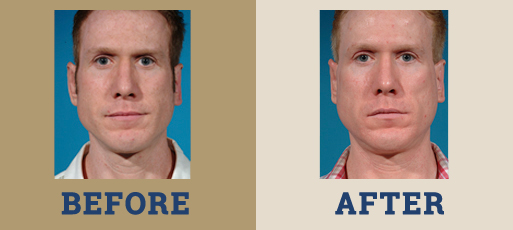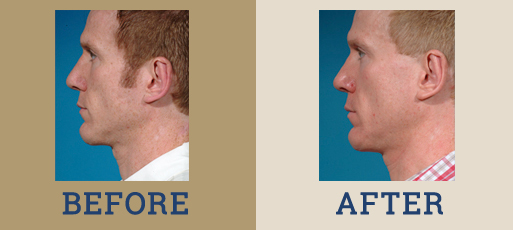Definition
The bony framework underlying the facial soft tissues and muscle is a critical component to address when considering plastic surgery of the face. Pleasing facial aesthetic appearance is marked by good symmetry and facial proportions. If there is an imbalance between upper and lower face proportions, patients can have areas that appear more conspicuous than usual. For example, a nose may appear larger than it actually is if the chin lacks projection or form.
Chin augmentation or chin advancement is often performed in patients with recessive or short chins. This procedure is often combined with rhinoplasty (nasal reshaping) to improve the appearance of both. Chin advancement is termed, genioplasty, and can be performed either by cutting the bones of the chin with repositioning, or with the use of an implant. An Osseous genioplasty (cutting of bone) is used in situations where significant advancement of the chin is needed or if the chin needs to be lengthened from the superior to inferior direction. An implant can be used in cases with straightforward anterior advancement with minimal lengthening. Most patients with recessive chins who undergo rhinoplasty are candidates for chin implants.
How to treat
An osseous genioplasty requires an intra-oral incision to gain access to the chin bone. This incision is well-hidden in the gum line. The bone is cut (osteotomy) and repositioned appropriately. Titanium plates and screws are used to stabilize the bony advancement. Sometimes a bone substitute is used to help camouflage the edges of the bone cuts.
An implant genioplasty is typically performed through a submental incision (underneath the chin). This also is well-hidden and heals rapidly. A pocket is created next to the chin bone and an implant placed. It is stabilized with sutures or titanium screws. These implants come in the form of synthetic materials like silicone, Gortex, hydroxyappatite (a bone substitute), or Medpor (porous polyethylene).
A consultation with Dr. Ha can help you determine if you are a candidate for genioplasty and which of the techniques is most appropriate for your anatomy.



